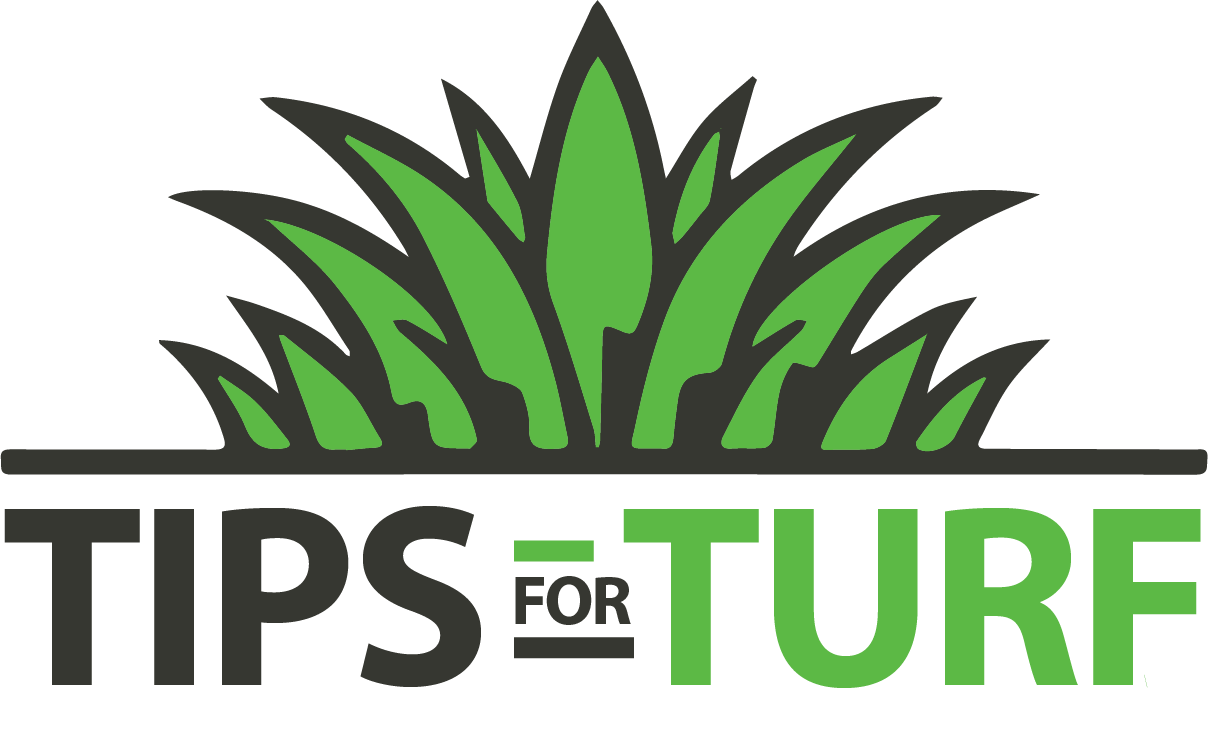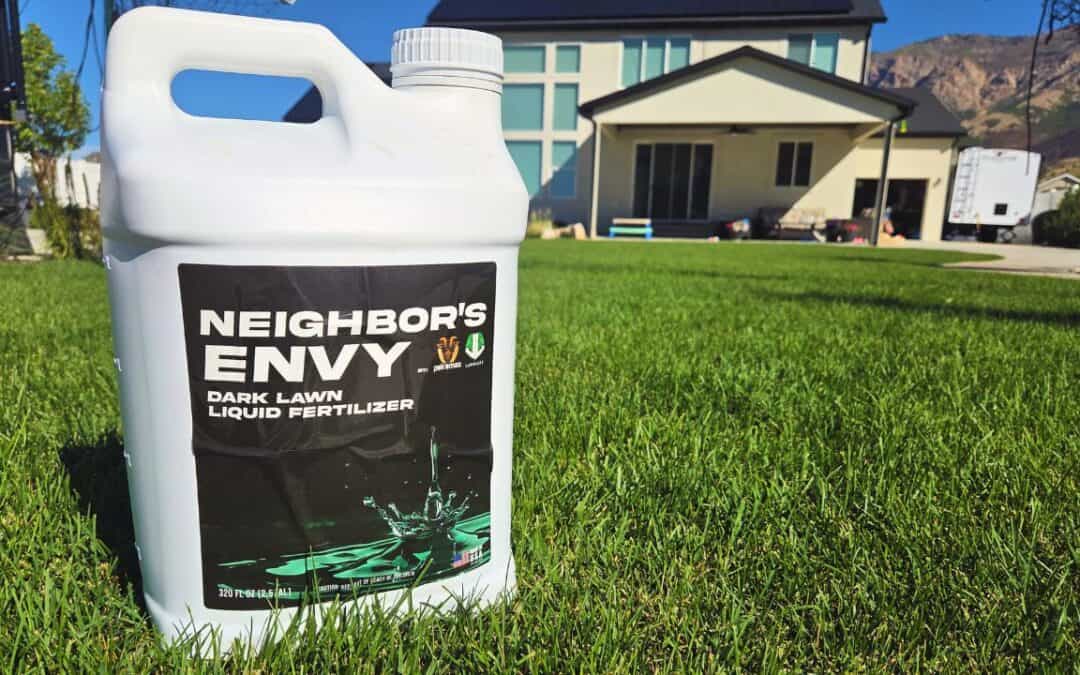Curious if Neighbor’s Envy fertilizer really works? I tested the viral lawn product on Kentucky bluegrass to see if it could turn my lawn greener in just days. Here’s what happened.
(If you make a purchase using the links in this post, we may earn a commission.)
What Is Neighbor’s Envy?
Neighbor’s Envy is a liquid lawn fertilizer that’s been going viral online. Some people claim it makes grass greener in just a few hours, even though the label says 7–14 days. With ingredients like nitrogen, potassium, iron, sea kelp, and humic acid, it promises quick color with macro and micro nutrients plus long-term soil health and conditioning with organic elements.
Fundamentally, you likely could create a liquid fertilizer concoction similar to this product, but to have these unique elements combined all into a single fertilizer ready for mixing (and applying) was very appealing.
Why I Tested Neighbor’s Envy
There were a few main reasons that i wanted to test Neighbor’s Envy and see if it lived up to the hype. Here’s why:
Soil Deficiencies
The first reason was that I had just barely done a soil test on my yard (something I do every year), and I had some glaring deficiencies in my soil. From a macronutrient perspective, I was very low on Nitrogen and Potassium (the N and the K in the NPK fertilizer big three). In the micronutrient category, I was very low in Iron.
I was in the market for a fertilizer (or fertilizers) that could help me give my lawn the nutrients it needed, and it just so happened that Neighbor’s Envy’s top three nutrients were Nitrogen, Potassium and Iron.
Since I have Kentucky bluegrass – a nitrogen-hungry grass type – this seemed like a perfect match.
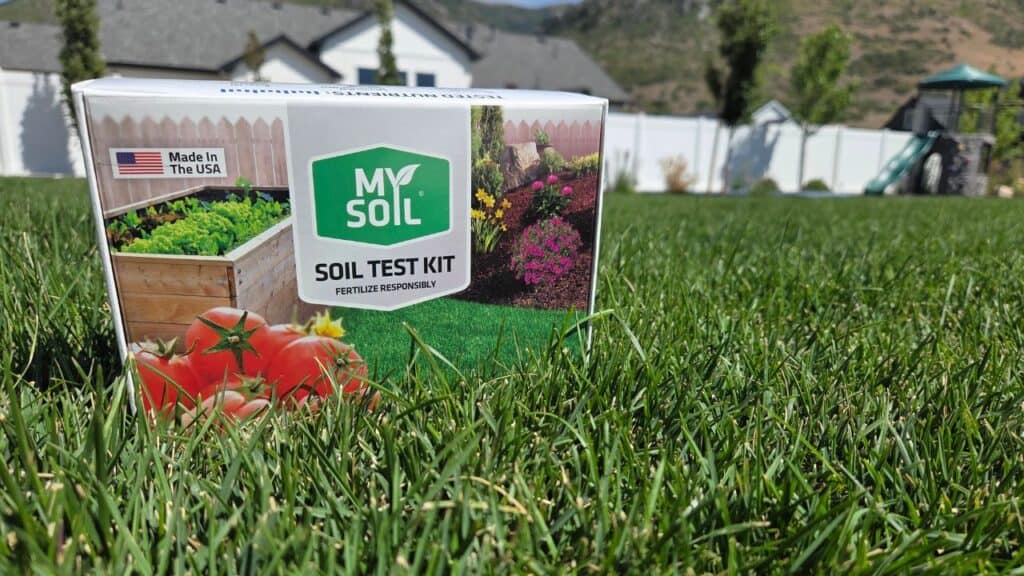
Organic Additives for Soil
Second, my lawn here in Utah deals with soil made up of a lot of clay. Clay has compaction issues (especially after a heavy winter) and I’m hoping to recondition my soil over the next couple of years to help with water retention, etc.
To condition poor soil, you do need to add organic elements to your lawn. Neighbor’s Envy had some unique organic additives I was already interested in introducing to my soil like Sea Kelp and humic acid.
Viral “Greening Up” Claims
Lastly, I had heard the hype of Neighbor’s Envy and I wanted to see if it could live up to its claims. I had seen other videos on YouTube that showed almost instant results and wanted to try it for myself.
- Viral “Greening Up” Claims – I wanted to see if it really greens up grass almost instantly.
- Soil Deficiencies – My soil test showed I was low in nitrogen, potassium, and iron, all of which Neighbor’s Envy contains.
- Organic Additives For Soil – It also includes sea kelp and humic acid, which help condition poor soil.
Since I have Kentucky bluegrass—a nitrogen-hungry grass type—it seemed like a good match.
How to Apply Neighbor’s Envy

If you want to try this fertilizer to your lawn, here’s the tools that you’ll need:
- Neighbor’s Envy liquid fertilizer – https://thelawnlife.com/products/neighbors-envy-liquid-lawn-fertilizer?sca_ref=9570198.tnSsFSCU50O
- A 1–2 gallon pump sprayer – https://amzn.to/46frKaS
- A measuring cup – https://amzn.to/3JqlPrO
- MySoil Testing Kit (Optional) – https://amzn.to/45c8gn8
1. Mix up the Fertilizer
You’ll first want to measure the size of your yard in square feet and then calculate the amount of neighbor’s envy and water you’ll need to mix together to apply it to your yard.
One thing to note is that the very first application of Neighbors Envy is also the largest. You’ll be putting 10oz more Neighbor’s Envy per gallon of water on the first application than you will on any subsequent applications. See the Neighbors Envy fertilizer mix ratios below:
Fertilizer Application Rates:
- First application: 18 oz per 1 gallon of water per 1,000 sq ft
- Follow-up applications: 8 oz per 1 gallon of water per 1,000 sq ft
I mixed mine in a 2-gallon sprayer (36 oz fertilizer + 2 gallons of water = 2000 sq ft).
2. Apply The Liquid Lawn Fertilizer Evenly
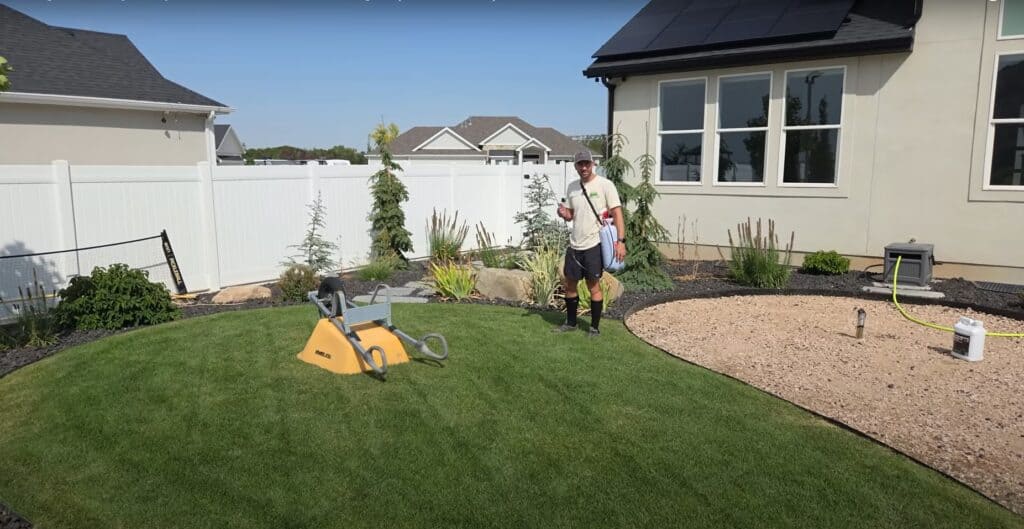
After mixing the Neighbors Envy in my 2 gallon pump sprayer, I applied evenly across the lawn, and set up a control spot (covered with a wheelbarrow) so I could compare treated vs. untreated grass with the liquid lawn fertilizer.
When applying, I sprayed the lawn fertilizer around the perimeter of my yard first, and then followed my mow lines to get an even spread across the lawn.
3. Water In The Neighbor’s Envy at 4-6 Hours
Lastly, the instructions say to water in the liquid fertilizer at about the 4-6 hour mark. You want to leave it for 4 hours untouched so that it can work its way into the blades of the grass without being diluted.
After 4-6 hours, though, you run the risk of fertilizer burn if you haven’t applied a thorough watering to your lawn.
Neighbor’s Envy Results
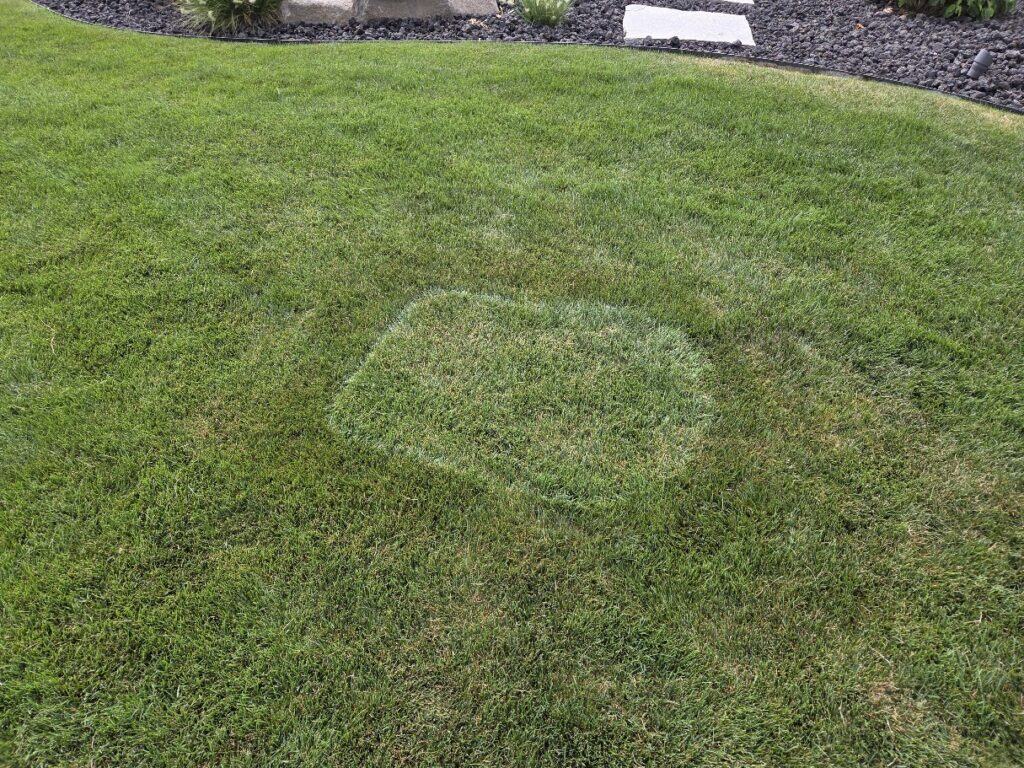
Here’s how my yard responded:
- 10 minutes later – I already saw darker green patches forming. This was likely mostly due to the initial stain of applying the fertilizer, but the results were shocking when seeing the controlled portion of my yard (under the wheelbarrow) versus the spots where the liquid lawn fertilizer had been applied.
- 4-6 hours later – The lawn looked greener overall, though I noticed a few brown streaks where I may have over-applied. This browning was likely due to the iron in the Neighbor’s Envy formula, and would quickly go away after a few days of watering.
- 1 week later – The grass was a deeper green and growing much faster than the control area. I had to mow within 3 days of applying it, where I had only been mowing every 10 or so days for most of the summer (because my lawn was lacking in nitrogen).
- 2 weeks later – After the second application, my lawn was rich, dark green and looked much healthier than the untreated spot.
Is Neighbor’s Envy Worth It?
From my test, the answer is yes. If your soil is lacking nitrogen, potassium, or iron, Neighbor’s Envy can make a big difference quickly. My lawn went from average to lush green within two weeks.
Pro tip: Do a soil test before applying. That way you’ll know whether your yard actually needs what Neighbor’s Envy provides. Check out my guide on how to do an at-home soil test. It’s simple, affordable, and helps you pick the right fertilizer the first time.
